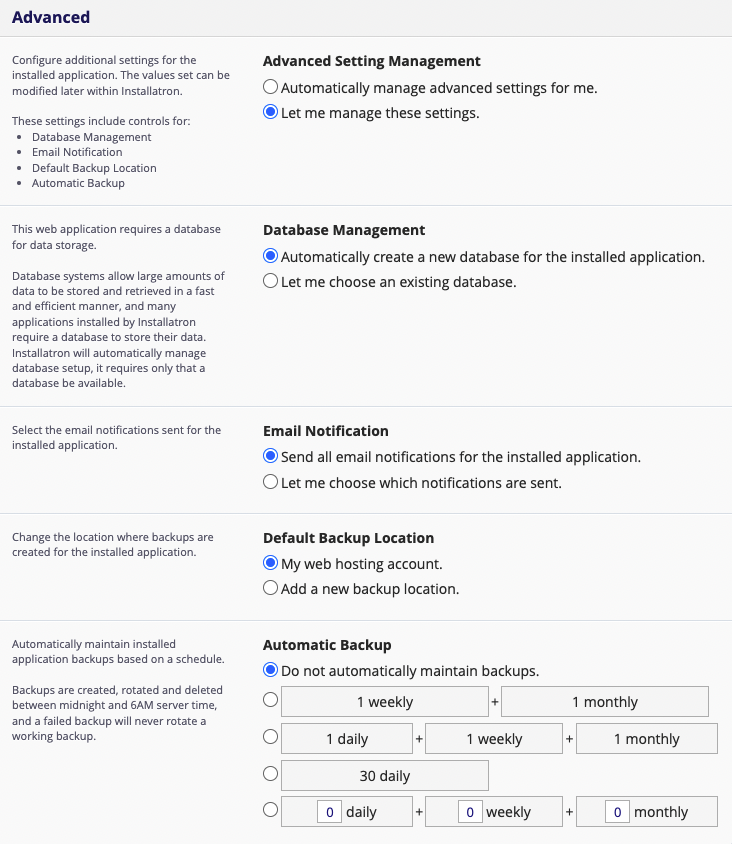Installing WordPress is fairly simple. Either follow the steps in this article, watch the video below, or make a Tech Bar appointment to learn.
Select WordPress
- Once signed up and logged in at knight.domains, you’ll be at the homepage of your control panel. Scroll down and look under Web Applications, then click the WordPress button.

- This page gives you more information about the WordPress software. To begin the install click Install this Application in the upper-righthand corner.

Installation Settings
On the next page, the installer will ask for some information about this install.
Location
The first thing you’ll want to do is decide where to install it. For example, you could install it on a subdomain you have created by selecting it from the drop-down menu under “Domain“. Whether it’s your main site (ex norby.knight.domains) or a subdomain (ex. fun.norby.knight.domains), you’ll want to choose the option that starts with https and does not include www. You also have the option of installing WordPress in a subfolder by typing in the folder name in the “Directory” field. Leave this field blank unless you are wanting to create a subdirectory. Check out our article on subdomains and subdirectories for more information.

Administrator Username and Password
Under the “Settings” section, make sure to change the Administrator Username and Administrator Password. WordPress makes them randomly generated characters by default. There aren’t any restrictions with what you can change it to, but we suggest avoiding your domain name or the word “admin” for your username and using a strong password.

Backups
By default the installer will automatically backup your website and update it anytime a new version comes out. While we recommend you keep this option, it is possible to only do minor updates, or turn them off completely. To do this, select “Let me manage these settings” under the “Advanced” tab.
The installer will also create a database for you automatically, but if you’ve already created one for this website you can choose “Let me choose an existing database” and enter the details.

Install
Finally, you’ll need to create an initial username and password for the WordPress install. Enter that information in the final section and click Install.

The installer will take just a few moments to install WordPress and a progress bar will keep you updated. When it is complete, you will see a link to your new WordPress site as well as a link to the backend administrative section for your WordPress site.

When it is complete, you will see a link to your new WordPress site as well as a link to the backend administrative section for your WordPress site.

Congratulations, you’ve now installed WordPress! Now you can start customizing it with themes, plugins, and more